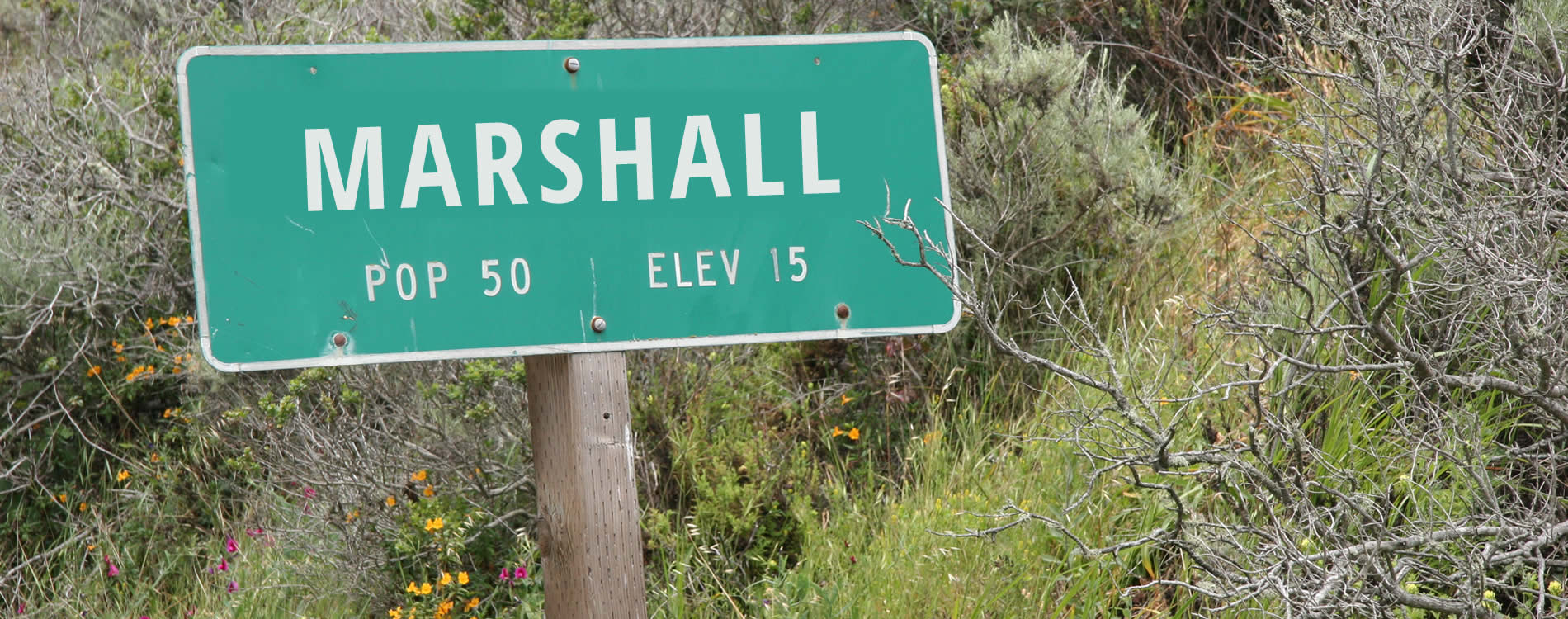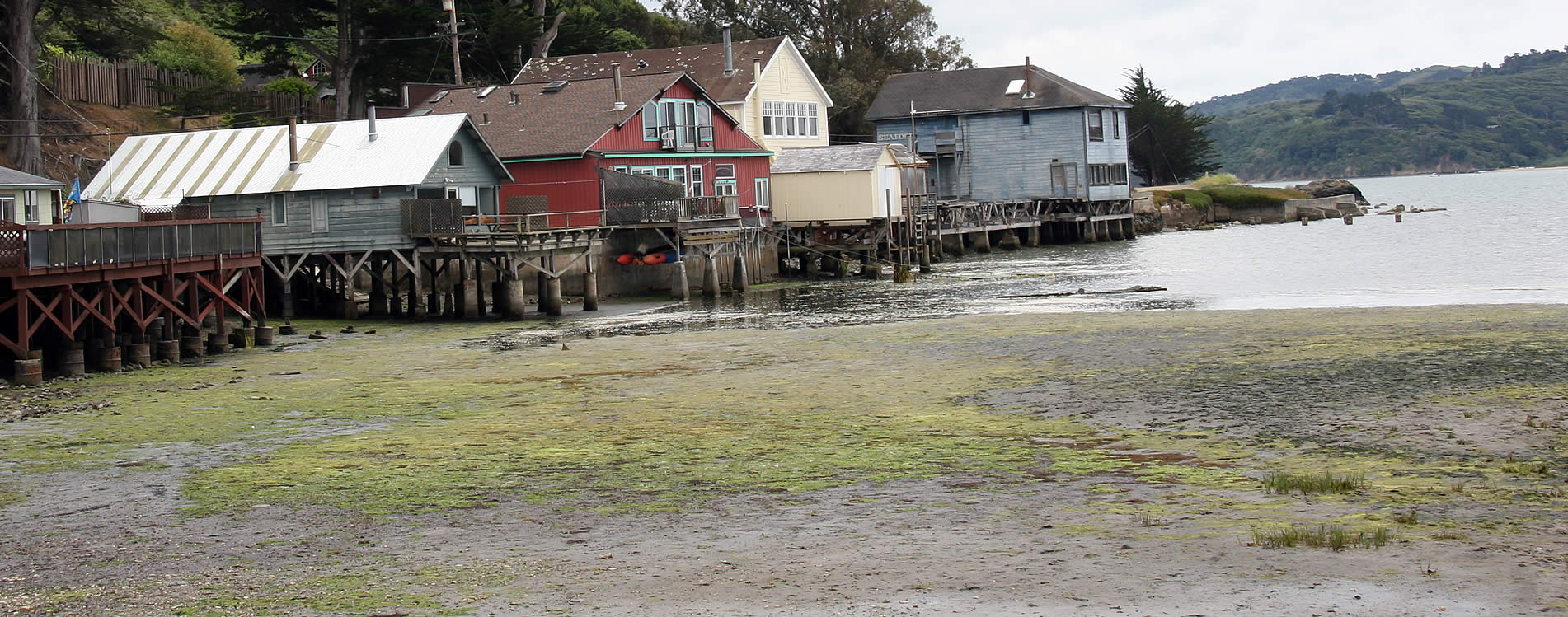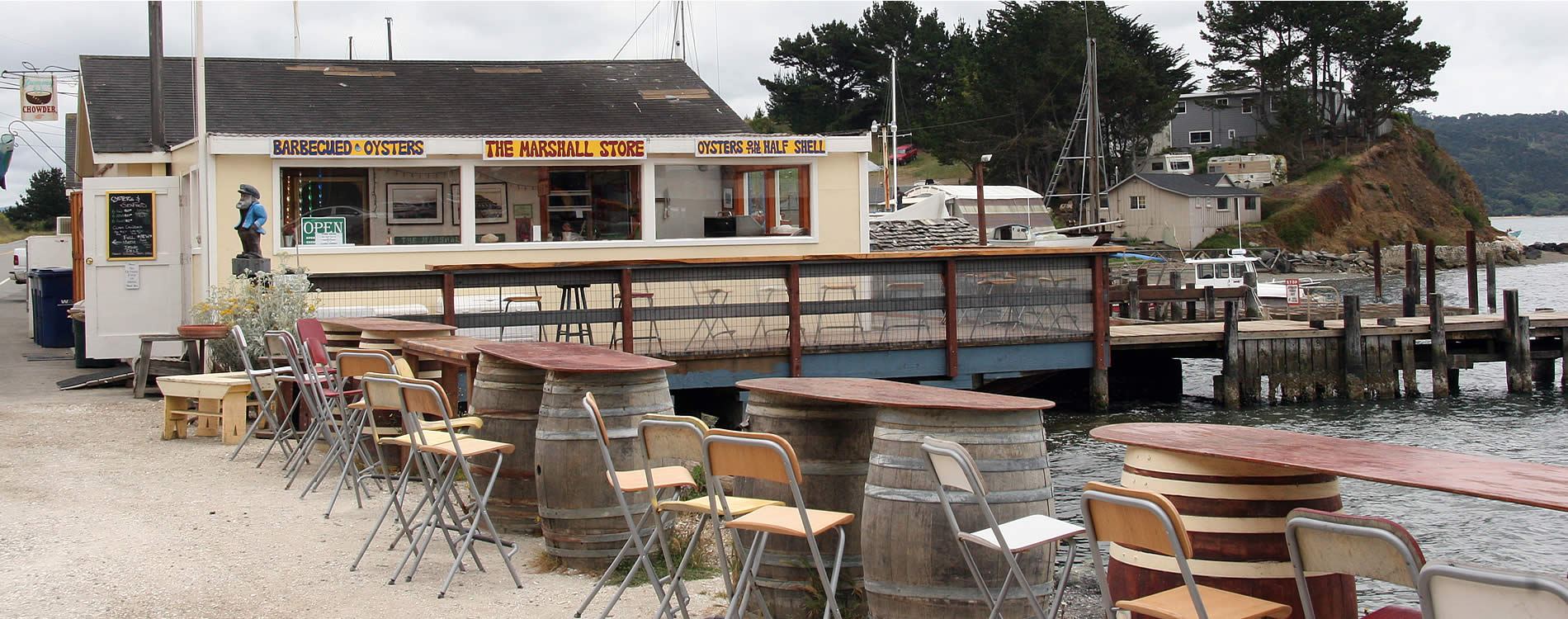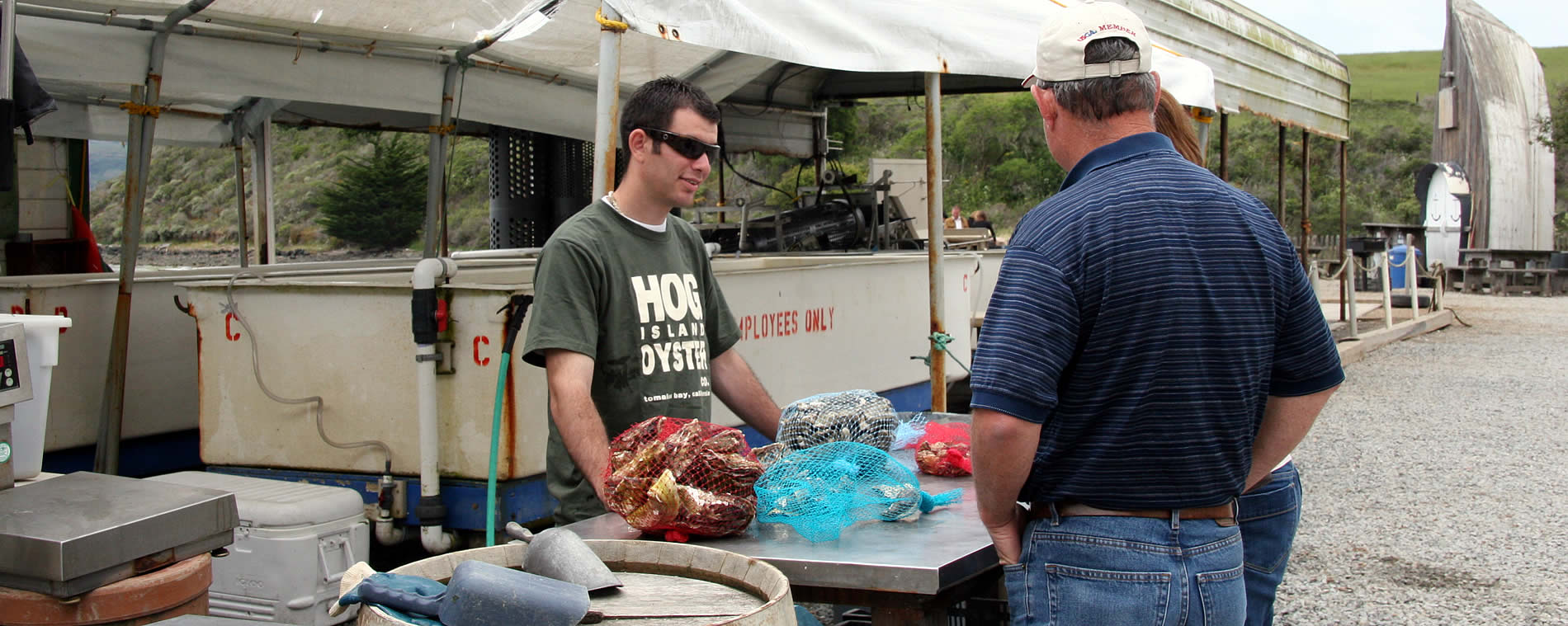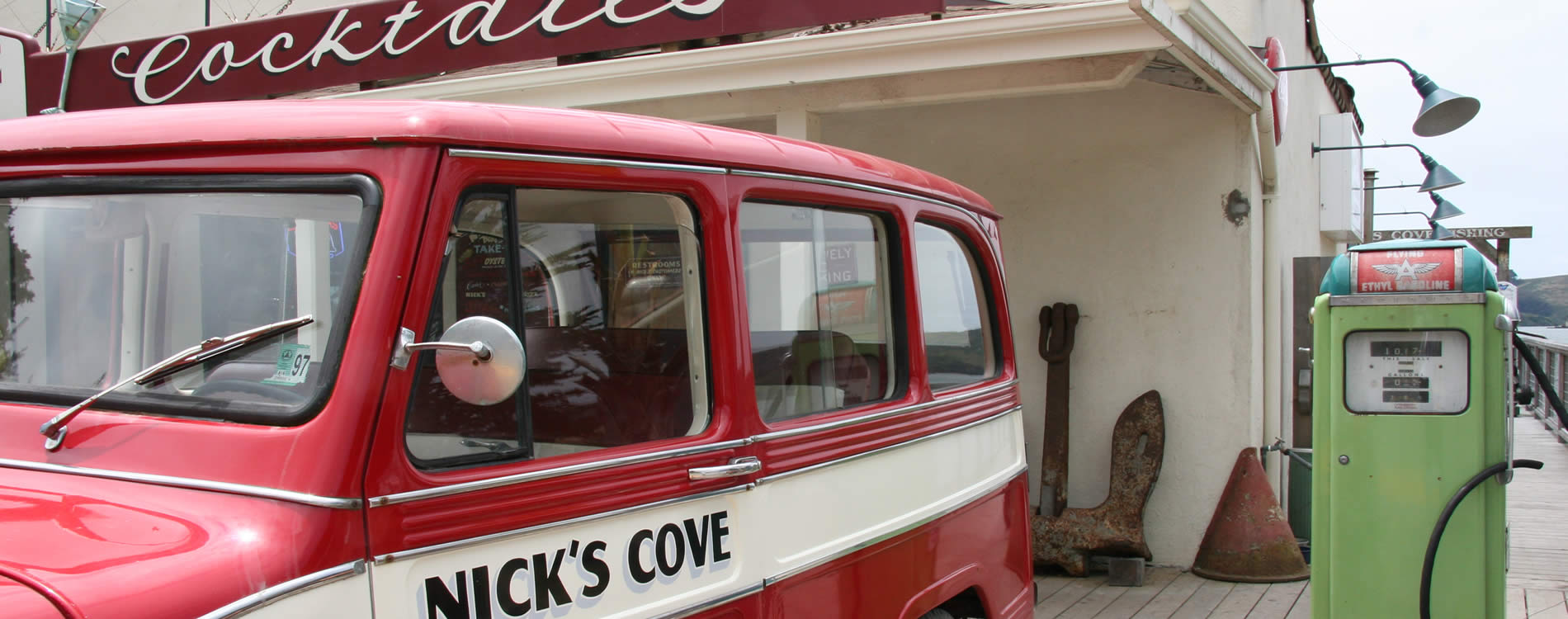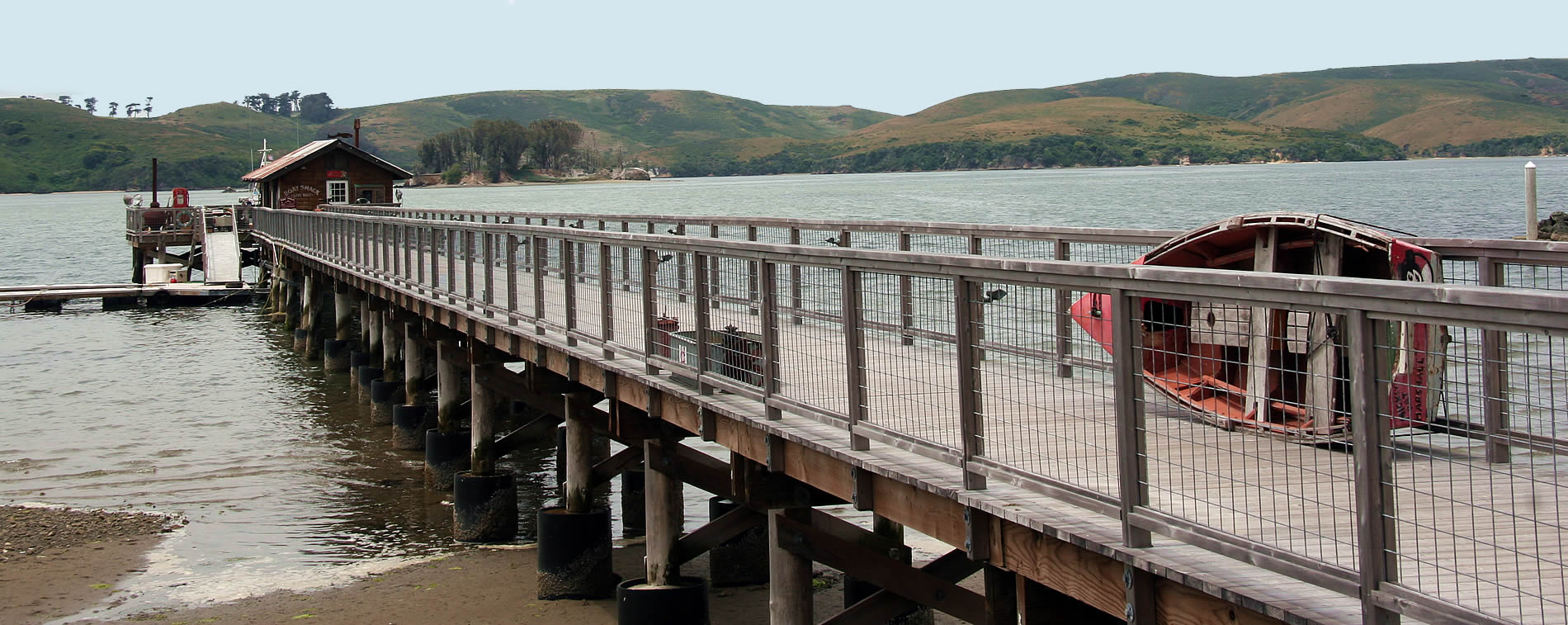Marshall, California
Oysters are perhaps now the most visible “crop” in Marshall, where about half the state’s shellfish growers lease acreage on the floor of Tomales Bay. Clams and oysters are available roadside from the companies themselves, or barbecued at most of the area’s restaurants.
Marin’s dairy industry began here. Brothers Hugh, James, Samuel, Alexander, and David Marshall showed up from the East with cattle in the mid-1850s but folklore has it that Clara Steele and a Miwok Indian got the local industry started in 1852, when they milked a wild cow.
Marshall is still home to a couple of dairies – one of them organic- although these days the hillsides are mostly just used for grazing.
Hikers can enjoy Millerton Point, which is about four miles north of Point Reyes Station and part of Tomales Bay State Park. The walk out to the end along Alan Sieroty Beach isn’t long, but the point extends far enough across Tomales Bay so as you can almost yell back and forth with people in downtown Inverness. Atop a pole not far from the parking is an osprey nest.
Further north is state-owned Marconi Conference Center, sort of junior version of Asilomar in Pacific Grove that features a gorgeous (though empty) Mediterranean-style hotel. Guglielmo Marconi, the father of wireless radio, built the first trans-Pacific receiving station here in 1913; the 28-room hotel was meant to house workers. RCA took over the site in 1920, followed decades later by the cultish drug-and-alcohol rehab group Synanon, which thrived there in 1970s before turning violent and collapsing.
Just north of Marconi uphill of the highway, stands a small Miwok cemetery, the spare white crosses sometimes draped in flowers.
Marshall has a boat launch, at county owned Miller Park about three miles north of “downtown.” North past that is a string of dilapidated waterfront cabins, formerly a Bohemian establishment known as Jensen’s Oyster Co. but now a ghost village owned by the National Park Service. Nearby is the marshy delta of Walker Creek, which at sunset looks webbed with quicksilver. The birds posing like alabaster bottles are egrets.
Quick Links
Marshall Lodging
Marconi Conference Center
Nick’s Cove Cottages
Restaurant / Foods
Nick’s Cove Restaurant & Oyster Bar

